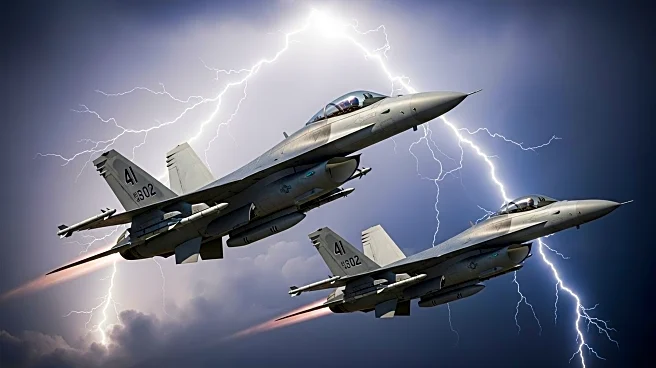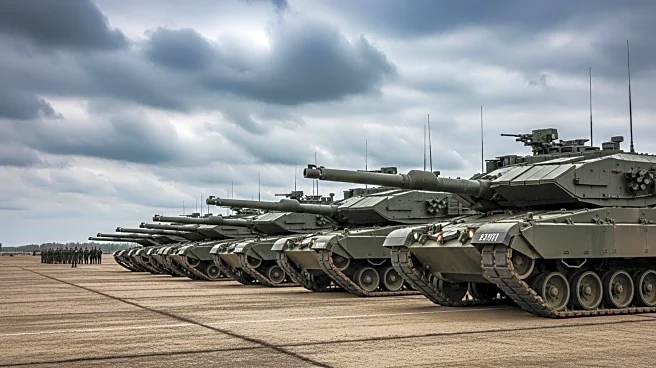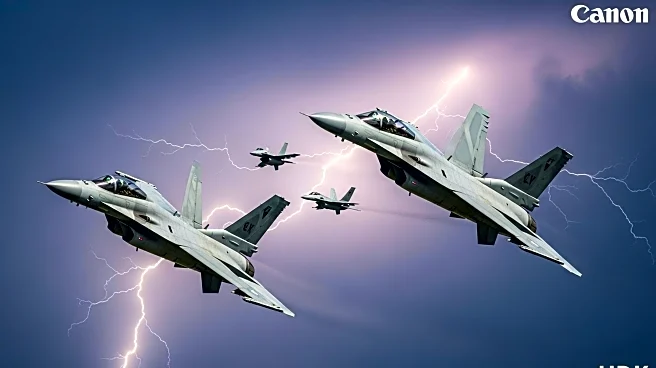What's Happening?
The border between Poland and Belarus has become a focal point of military and geopolitical tension, reminiscent of the Cold War era. Russian and Belarusian military drills near the border, along with Russian drone incursions into NATO airspace, have heightened concerns about regional security. Poland has responded by closing border crossings and reinforcing defenses as part of its East Shield program. NATO has launched Operation Iron Defender 25, involving over 30,000 troops, to bolster Poland's defenses. The U.S. is closely monitoring the situation, given its commitment to NATO allies and the strategic importance of the Suwałki Gap, a corridor that could be targeted by Russia to cut off the Baltic states from NATO.
Why It's Important?
The tensions along Poland's border with Belarus have significant implications for U.S. national security and NATO's stability. The U.S. has a vested interest in maintaining the integrity of NATO's eastern flank, as any attack on Poland could trigger Article 5 and draw the U.S. into direct conflict with Russia. The military buildup in the region underscores the strategic importance of Poland as a logistics hub for weapons shipments to Ukraine and a key player in countering Russian aggression. The situation also highlights the evolving nature of warfare, with cyberattacks and disinformation campaigns adding complexity to traditional military threats.
What's Next?
The ongoing military exercises and border tensions are likely to continue, with NATO and the U.S. maintaining a strong presence in the region. The potential for escalation remains, as any miscalculation could lead to broader conflict. The U.S. and its allies will need to balance deterrence with diplomatic efforts to prevent further destabilization. The situation may also prompt discussions on enhancing NATO's capabilities and readiness to address hybrid warfare tactics employed by Russia. The strategic importance of Poland and the Suwałki Gap will remain a key focus for U.S. defense policy.












